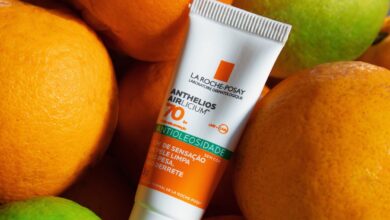
In this article, you will discover the key factors to consider when finding the perfect peel for your skin. With so many different options available, it can be overwhelming to determine the right intensity and type for your unique needs. Whether you’re a skincare enthusiast looking to refresh your routine or someone new to the world of peels, this guide will help you navigate through the choices and achieve the glowing, rejuvenated skin you’ve always desired. From analyzing your skin’s sensitivity to understanding the different peel types, we’ve got you covered. So, let’s embark on this journey together and unlock the secrets to finding the ideal peel for your skin!
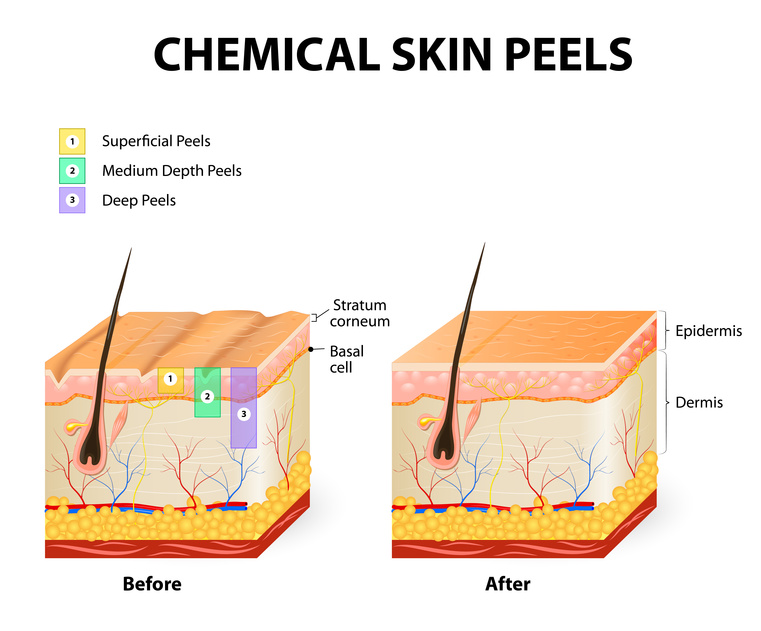
Understanding Chemical Peels
Chemical peels are a popular skincare treatment that can help improve the appearance of your skin. Whether you’re dealing with acne, wrinkles, or pigmentation issues, chemical peels can be a great option to consider. In this article, we will explore what chemical peels are, how they work, the different types of peels available, and the various benefits they offer.
What are chemical peels?
Chemical peels are a form of exfoliation that involves applying a chemical solution to the skin. This solution works to remove the outer layer of dead skin cells, revealing smoother, more youthful-looking skin underneath. By stimulating the regeneration of new skin cells, chemical peels can also address a range of skin concerns, such as fine lines, acne scars, sun damage, and uneven skin tone.
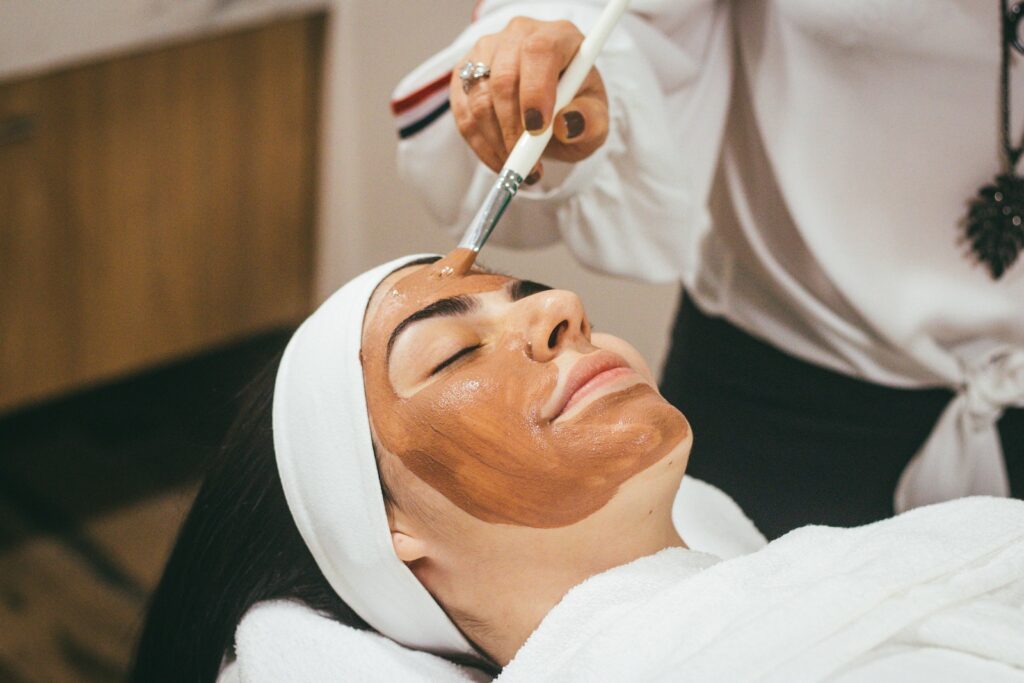
How do chemical peels work?
Chemical peels work by using specific chemical solutions that target different layers of the skin. The solution is applied to the face or other areas of the body and left on for a certain amount of time, depending on the type and intensity of the peel. The chemicals in the solution work to break down and remove the damaged outer layer of skin, allowing new and healthier skin to emerge.
Different types of chemical peels
There are several different types of chemical peels available, and the type you choose will depend on your specific skin concerns and goals. The three main categories of chemical peels are superficial peels, medium-depth peels, and deep peels. Additionally, there are combination peels that combine multiple acids for a customized treatment.
Benefits of chemical peels
Chemical peels offer a range of benefits for your skin. They can help improve the appearance of fine lines and wrinkles, reduce the appearance of acne scars and sun damage, and even out skin tone. Chemical peels can also stimulate collagen production, leading to firmer and more youthful-looking skin. Additionally, chemical peels can help unclog pores, reduce the frequency of breakouts, and improve overall skin texture.
Factors to Consider
Before undergoing a chemical peel, there are several factors you should take into consideration. These factors will help you determine the right type and intensity of peel for your skin.
Skin type and sensitivity
Understanding your skin type is crucial when choosing a chemical peel. Different peels work better on different skin types, so it’s important to know whether you have oily, dry, combination, or sensitive skin. Your dermatologist can help you determine your skin type and recommend the most suitable peel for you.

Skin concerns and goals
Identifying your skin concerns and goals will also guide your decision. Are you primarily looking to reduce the appearance of fine lines and wrinkles, or do you want to lighten acne scars? By having a clear understanding of what you want to achieve, you can choose a peel that specifically targets your concerns.
Intensity of the peel
The intensity of the peel refers to the depth it penetrates the skin. Superficial peels are more gentle and target the outermost layer of skin, while medium-depth and deep peels penetrate deeper into the skin layers. The intensity of the peel will depend on the severity of your skin concerns and the amount of downtime you can tolerate.
Downtime and recovery
Consider how much downtime you can dedicate to the recovery process. Superficial peels typically have little to no downtime, while medium-depth and deep peels may require several days or even weeks of recovery. It’s essential to understand the recovery process and make sure it aligns with your schedule and lifestyle.
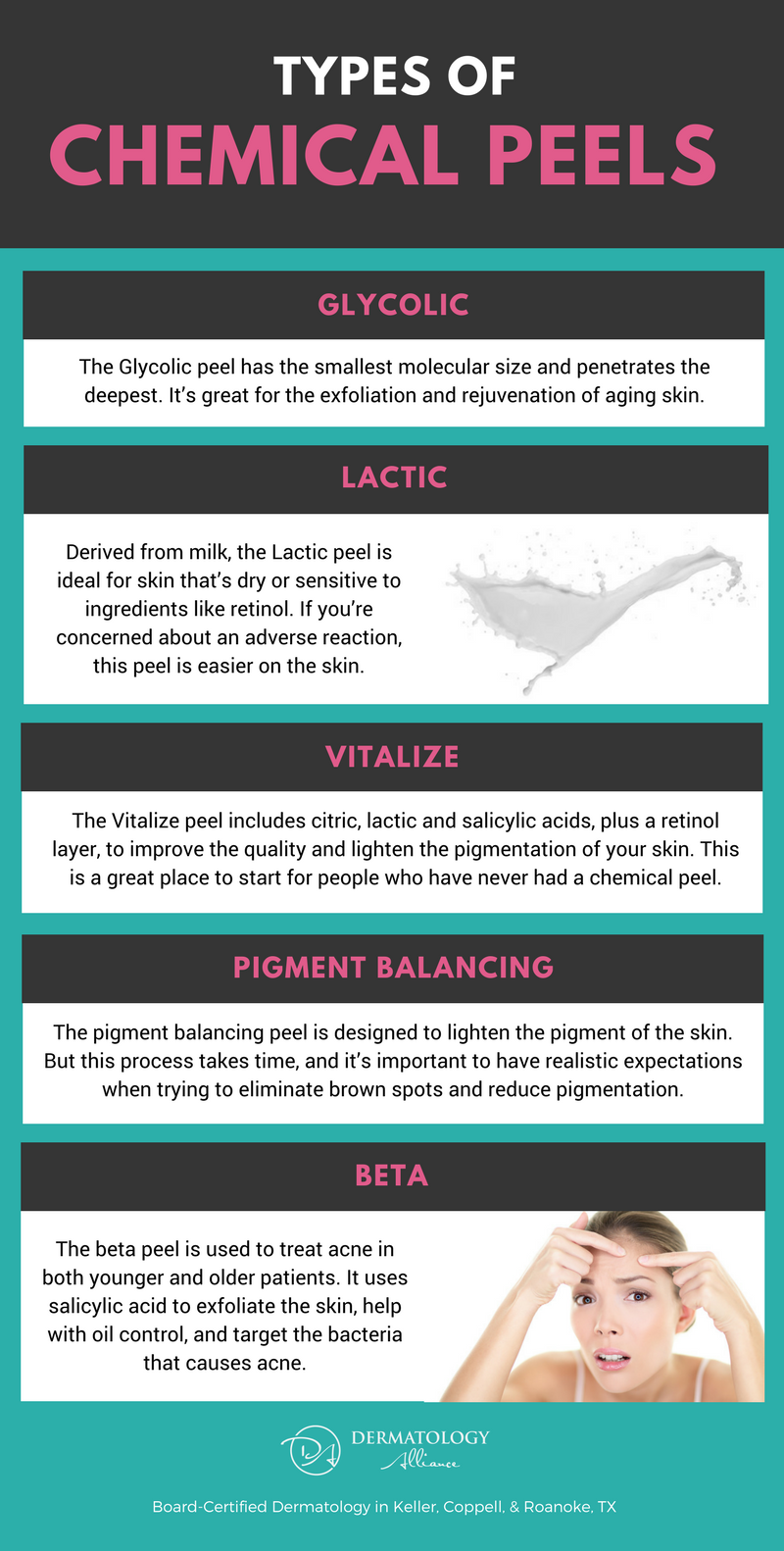
Determining Skin Type and Sensitivity
To determine your skin type, there are a few factors to consider. First, assess whether you have oily, dry, or combination skin. Oily skin tends to produce more oil and is prone to breakouts, while dry skin may feel tight, flakey, or itchy. Combination skin shows characteristics of both oily and dry skin.
Sensitive skin vs non-sensitive skin
Determining whether your skin is sensitive or non-sensitive is also important. Sensitive skin is more likely to react to certain ingredients or environmental factors. It may become red, itchy, or irritated more easily. Non-sensitive skin, on the other hand, is less reactive and can tolerate a wider range of products and treatments.

Considering skin conditions or allergies
If you have any specific skin conditions or allergies, it’s essential to take those into consideration when choosing a chemical peel. Certain skin conditions, such as eczema or rosacea, may require more gentle peels or even rule them out altogether. Allergies to specific ingredients or compounds should also be taken into account to avoid any adverse reactions.
Consulting with a dermatologist
If you’re unsure about your skin type, sensitivity, or any potential contraindications, it’s always best to consult with a dermatologist. They have the knowledge and expertise to assess your skin and provide personalized recommendations for the most suitable chemical peel for you.
Understanding Different Types of Peels
Now that we have discussed the factors to consider, let’s take a closer look at the different types of chemical peels.
Superficial peels
Superficial peels are the mildest type of chemical peel and target the outermost layer of the skin. These peels typically use alpha-hydroxy acids (AHAs), such as glycolic acid, salicylic acid, lactic acid, or mandelic acid. They are ideal for addressing minor skin concerns and require little to no downtime.
Medium-depth peels
Medium-depth peels penetrate deeper into the layers of the skin. They typically use trichloroacetic acid (TCA) or a combination of TCA and other acids, such as Jessner’s solution. These peels can address moderate skin concerns and usually require a few days of recovery time.
Deep peels
Deep peels offer the most dramatic results but also require the longest recovery time. These peels use phenol or croton oil to deeply penetrate and resurface the skin. They are typically recommended for more severe skin concerns, such as deep wrinkles or scars.
Combination peels
Combination peels involve the use of multiple acids in customized formulations. By blending different acids, dermatologists can target multiple skin concerns simultaneously. These peels are highly personalized and can be tailored to address your specific needs.
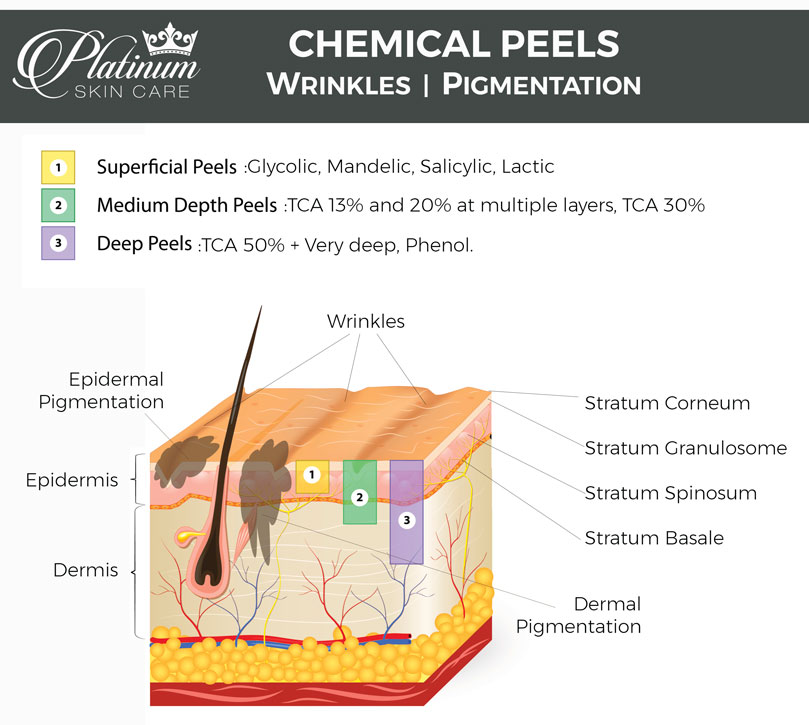
Choosing the Right Intensity of Peel
Choosing the right intensity of peel depends on several factors, including your skin concerns, downtime, and the strength of the peel.
Evaluating skin concerns
Take a close look at your skin concerns and goals. If you have mild skin issues and want a quick refresh, a superficial peel might be sufficient. For more significant concerns, such as deep wrinkles or acne scars, medium-depth or deep peels may be more appropriate.
Considering downtime and recovery
Consider the amount of downtime you are willing to commit to. Superficial peels have minimal downtime, while medium-depth and deep peels require more substantial recovery time. Make sure to factor in any upcoming events or commitments when deciding on the intensity of the peel.
Understanding peel strength
Peel strength refers to the concentration and pH level of the chemical solution. Stronger peels yield more significant results but also come with a higher risk of side effects. It’s important to strike a balance between the desired results and the potential risks associated with the peel strength.
Balancing results and risks
Finding the right balance between achieving desired results and minimizing risks is crucial. Consult with a dermatologist who can assess your skin and recommend the most appropriate intensity of peel for your specific needs. They will take into account your skin type, concerns, and goals to ensure a safe and effective treatment.
Superficial Peels
Now let’s delve into some specific types of chemical peels starting with superficial peels.
Glycolic acid peels
Glycolic acid peels are one of the most common types of superficial peels. They are derived from sugar cane and have small molecules, allowing them to penetrate the skin more effectively. Glycolic acid peels are suitable for all skin types and can help improve skin texture, reduce the appearance of fine lines, and even out skin tone.
Salicylic acid peels
Salicylic acid peels are particularly beneficial for individuals with oily and acne-prone skin. This beta-hydroxy acid (BHA) can penetrate oil glands and exfoliate deep within the pores. Salicylic acid peels help unclog pores, reduce acne breakouts, and improve overall skin texture.
Lactic acid peels
Lactic acid peels are gentle and hydrating, making them suitable for individuals with dry or sensitive skin. This AHA not only exfoliates the skin but also helps improve moisture retention. Lactic acid peels can enhance skin radiance, smooth fine lines, and improve overall skin texture.
Mandelic acid peels
Mandelic acid peels are well-suited for individuals with sensitive or darker skin tones. This AHA has larger molecules, allowing for a slower and more controlled penetration of the skin. Mandelic acid peels can help improve acne, hyperpigmentation, and uneven skin tone without causing excessive irritation.
Medium-Depth Peels
Moving on to medium-depth peels, let’s explore some specific types.
TCA (Trichloroacetic acid) peels
TCA peels are a popular choice for medium-depth peels. Trichloroacetic acid is a medium-strength chemical that can penetrate deeply into the skin. TCA peels are effective in reducing the appearance of moderate wrinkles, sun damage, and mild acne scars. They typically require a few days of recovery time.
Jessner’s peels
Jessner’s peels are a combination of resorcinol, salicylic acid, and lactic acid. This combination peel provides a deeper exfoliation and can address more stubborn skin concerns. Jessner’s peels are commonly used to treat acne, hyperpigmentation, and uneven skin tone.
Modified phenol peels
Modified phenol peels offer significant results but require the longest recovery time. These peels use a high concentration of phenol, which deeply penetrates the skin to reduce the appearance of deep wrinkles, scars, and sun damage. Modified phenol peels require several weeks of recovery but can provide long-lasting and dramatic improvements.
Deep Peels
For those with more severe skin concerns, deep peels may be an option.
Phenol peels
Phenol peels are the deepest and most aggressive type of chemical peel. They can effectively address deep wrinkles, scars, and sun damage. Phenol peels work by removing the outer layers of skin and stimulating collagen production. Due to their strength, phenol peels require an extended recovery period.
Croton oil peels
Croton oil peels are another type of deep peel that provide significant results. This peel uses a solution containing croton oil, which produces a controlled burn on the skin. Croton oil peels are effective in improving deep wrinkles, acne scars, and pigmentation issues. However, they also require an extended recovery period and must be performed by a skilled professional.
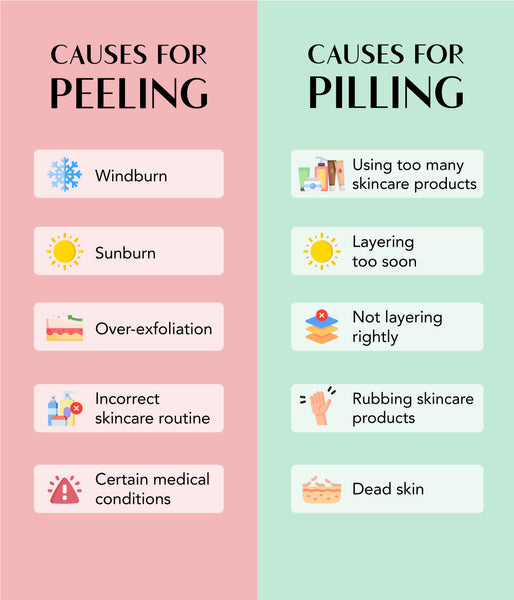
Combination Peels
Combination peels offer a customized approach to address multiple skin concerns simultaneously.
Combining different acids
Combination peels involve blending various acids to create a tailored chemical solution. This allows dermatologists to target multiple skin concerns, such as acne and hyperpigmentation, in a single treatment. By combining different acids, the peels can be adjusted to suit individual needs and provide optimal results.
Customized formulations
In addition to combining different acids, dermatologists can customize the formulation of the chemical peel based on individual needs. This may involve adjusting the concentration, pH level, or other ingredients to achieve the desired outcome. Customized formulations ensure that the peel is specifically tailored to address your unique skin concerns.
What are the benefits and considerations of using customized formulations and combination peels for chemical peels?
Benefits and considerations
Combination peels offer the advantage of addressing multiple skin concerns at once. By using a combination of acids and personalized formulations, dermatologists can create a treatment plan that is optimized for your specific needs. However, it’s important to keep in mind that combination peels may require a longer recovery time and can carry a higher risk of side effects compared to milder peels.
Conclusion
Understanding chemical peels is crucial when considering this popular skincare treatment. By exploring what chemical peels are, how they work, the different types available, and the factors to consider, you can make an informed decision about the intensity and type of peel that best suits your skin concerns and goals. Remember to consult with a dermatologist who can guide you through the process and ensure a safe and effective treatment that will leave you with the skin you desire.



